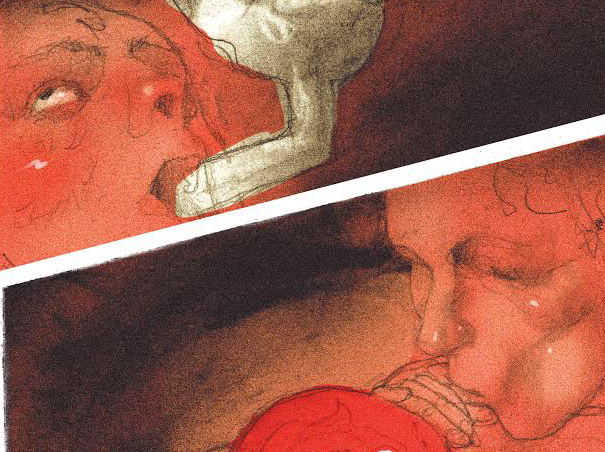
Go to a rave, concert, festival, club, bar or house show and you might see people with balloons.
“What are those for?” you wonder.
“Probably nothing legal,” you decide.
It’s called whippits. It is affectionately named after the horrible noise it makes coming out of the dispenser and the euphoric “whah-whah” feeling it produces. Whippits are nothing new—they’ve been a popular recreational drug since the 1960s. Research from the Journal of Psychopharmacology conducted in 2014 found that almost 30 percent of Americans have tried the drug.
The story of its use is a complicated one. It was first documented in 1793 by the English scientist Joseph Priestley, but its pain relieving effects were discovered by Sir Humphry Davy in 1799. It was Davy who then coined the name “laughing gas”.
Medically, it is used for its analgesic and anaesthetic properties. In layman’s terms, it takes you out of your body and away from the pain of medical procedures, commonly dental ones. But the effects are short-lasting. A moderate dose lasts only 20 seconds before you’re back on Earth. At higher doses, it can produce up to five minutes of a “lifted” sense of euphoria. At non-recommended doses, its dissociative effects can produce hallucinations. Frequently, it is paired with stronger dissociative agents or hallucinogens, like LSD or ketamine, to boost the effects of the other drugs.
Thomas is the owner of Happy Hookah, a smoke and vape shop downtown. They sell nitrous oxide as a novelty item in cute packs labeled as whipped cream chargers, complete with a dainty latte on the box. He had a lot of assumptions about the business he’d be doing when he moved near a college campus, but Thomas was surprised to find that Georgia State students aren’t part of the whipped cream charger clientele.
“Most customers coming in to buy [nitrous canisters] are business professionals, late 20s and early 30s,” Thomas said. “I’ve actually never sold any to students, which surprised me. When I started here, I expected 80 to 90 percent students and that’s not the case.”
Zack Williams is the store manager at World Piece, a smoke and vape shop in Little Five Points. At World Piece, the whipped cream chargers are packaged in boxes suggesting they be used for food-related sex play. Williams is under no illusion about how his clients use the product but says it’s none of his business (legally, he’s not required to care). Nitrous oxide regulations are fairly lax as compared to other controlled substances.
Under Georgia law, it’s illegal to sell or own nitrous oxide for non-medical purposes, but the enforcement of that law is laughable. Determining what purposes are medical or not is impossible for the average shop owner. And since whippits are often performed with balloons, lawmakers pursued both together as “paraphernalia.”
“Because of certain Georgia laws, we can’t sell the canisters next to the balloons,” Williams said.
He then pointed to a row of balloons, just a few counter spaces past the canisters— completely within the law.
Some studies suggest science has outgrown the use of nitrous oxide, claiming that modern alternatives are more effective and for less risk. But as we all know, habits are hard to kick and it could be a while before the medical community at large moves away from nitrous gas.
Emerging studies suggest the gas could have a place in medical practice. Numerous studies indicate nitrous oxide can be used to curb symptoms of withdrawal from opiates, alcohol and nicotine. However, those studies caution that nitrous oxide can cause dependence issues on its own, though incidents of serious dependence remain rare.
Dr. Peter Nagel in the journal Biological Psychiatry presents nitrous oxide as an alternative treatment for otherwise treatment-resistant major depression. Nitrous is being considered as an alternative N-methyl-D-aspartate antagonist, something psychiatrists were previously considering the drug dissociative and psychedelic drug, ketamine, for. However, there was a skittishness in prescribing ketamine because of its potential for overuse and popularity as a recreational street drug.
But these worries plague nitrous as well. There is the conventional understanding that nitrous oxide kills brain cells, a rumor you have undoubtedly heard before. Party-goers and regular users will tell you that is bogus. It sounds convincing—after all, it’s the same laughing gas your dentist uses, right?
In clinical settings, its use at high doses is relatively safe. The problem comes from regular and unsupervised use, such as in social circles that bond through frequent drug use, where nitrous is most common.
“Kids today are catching up with the hippies, [Nitrous] was big then too,” Williams said.
Nitrous oxide is often a party drug. Most frequently sold in canisters no larger than your little finger, and with a high lasting around 20 seconds, the list of reasons to do it alone is slim. Williams says that because the high is so short-lived, frequent customers buy in bulk. This led them to give customers a discount (for example, buy three cases and get a fourth for free), which they have since ended. They couldn’t keep the product on the shelves.
“Nobody comes in to buy one box. Because the high lasts 20 seconds, you could finish one box in a night by yourself,” Williams said. “A guy from Kennesaw would come in to buy seven or eight boxes every Friday night.”
The danger of nitrous is a little more complicated. Nitrous oxide bonds to vitamin B12. This reaction is dose-dependent and cumulative, meaning the amount and frequency of use directly affects the negative side effects. The reaction renders the B12 inert, leading to a deficiency.
Vitamin B12 is necessary for many brain functions and a deficiency can lead to poor balance, memory and energy levels, long-term nerve damage and eventually death. In a two-year study following at least monthly users, 4 percent of participants reported symptoms consistent with long-term nerve damage.
What remains clear is that prudence and judgement never hurt anyone.
“Everything in moderation,” Williams said.
